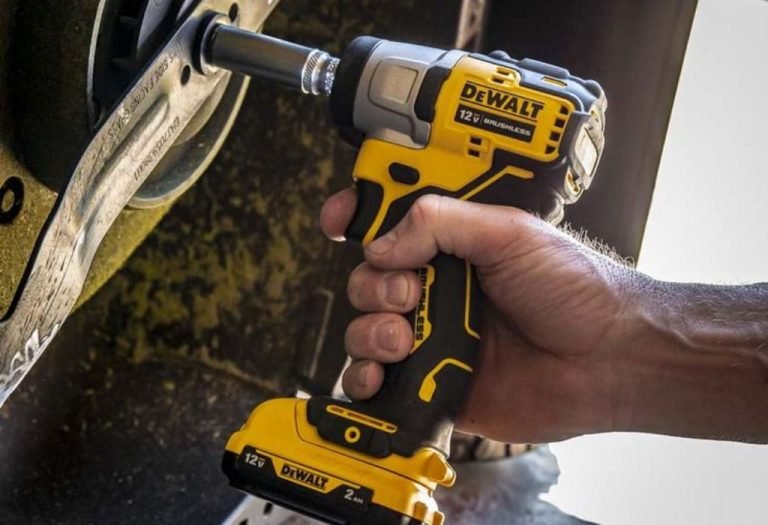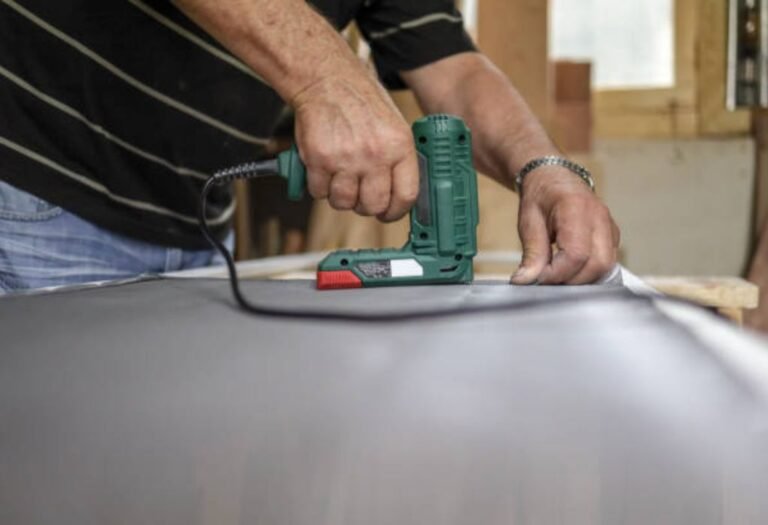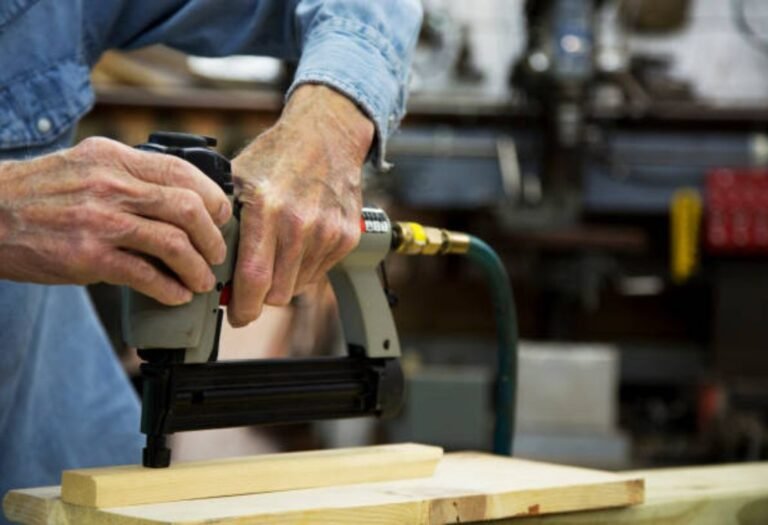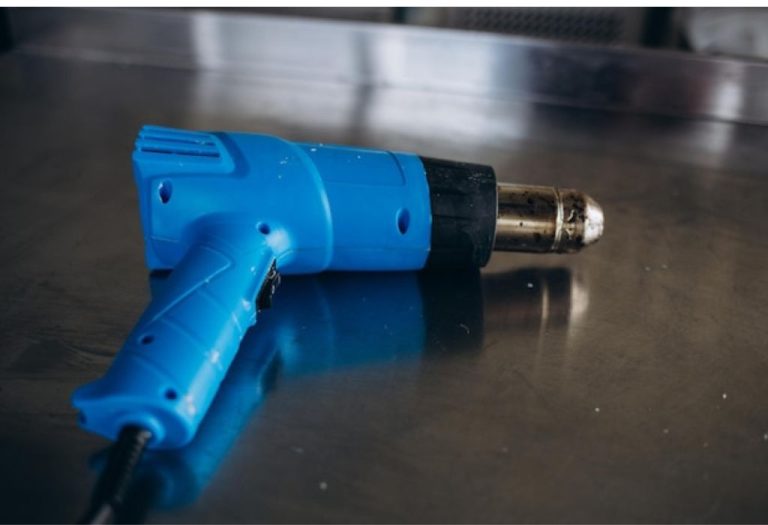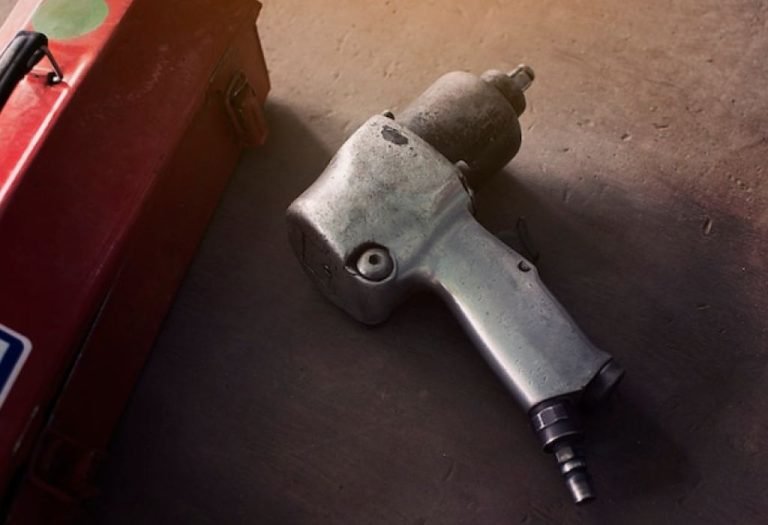How Long for Hot Glue Gun to Heat Up Before Use?
ou set up your craft project and reach for the hot glue gun. Plugging it in, you wonder how long it will take before it’s ready to use.
This small delay is one of the most common questions for DIY crafters and repair enthusiasts. Heating time varies by model, wattage, and glue stick size.
Mini glue guns typically heat up faster. They require less power and are designed for quick, light-duty projects.
Standard glue guns take a little longer. Their larger heating chambers melt glue sticks more slowly but provide better flow for bigger tasks.
High-temperature glue guns may take the longest to warm up. They need extra time to reach the higher heat required for stronger bonds.
On average, most glue guns heat up within 2 to 7 minutes. Some high-end models with advanced heaters can be ready in under 90 seconds.
Factors like room temperature, glue stick thickness, and gun quality also affect heating speed. A cold garage workspace, for example, slows down the process.
According to craft industry reports, hot glue guns are among the top five most used DIY tools worldwide. Knowing how long they take to heat helps plan projects more efficiently.
This guide explains how long for hot glue guns to heat up, what affects the timing, and tips to make the process faster and safer.
How Hot Glue Guns Work
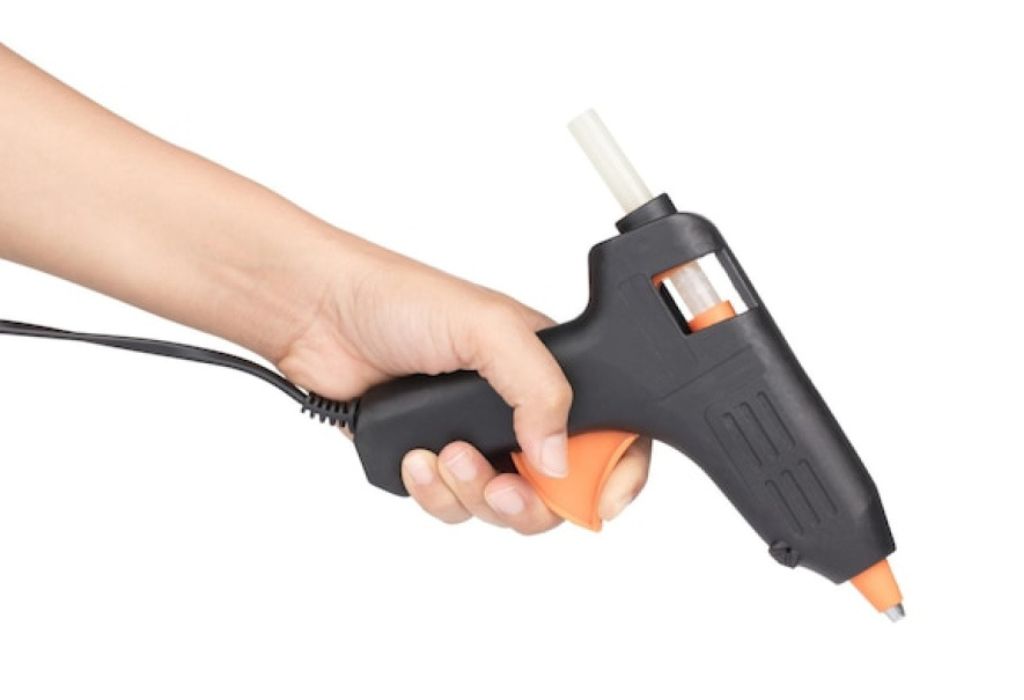
A hot glue gun uses an internal heating element to melt glue sticks. Once melted, the glue is dispensed through the nozzle with a trigger.
The heating chamber warms up gradually after plugging in. Different guns reach working temperature at different speeds.
Mini glue guns often use lower wattage. This allows them to heat up quickly but limits glue flow.
Standard-size guns take more time to heat. They handle larger glue sticks and offer stronger bonding power.
High-temperature guns run hotter than others. They are designed for materials like wood, fabric, and plastic.
Cordless glue guns may take longer to warm. Their batteries power smaller heating elements compared to plug-in models.
The key factor is how fast the heating element reaches melting temperature. Quality designs balance safety with speed.
Understanding how glue guns work explains why heating times vary.
What does a hot glue gun do?
It melts glue sticks and dispenses adhesive.
Why do heating times vary?
Different sizes and wattages heat at different speeds.
Do mini guns heat faster?
Yes, they warm up quicker due to lower power needs.
Why are high-temp guns slower?
They must reach higher heat for strong bonds.
Average Heating Times for Different Glue Guns
Mini glue guns usually heat up within 2 to 4 minutes. They are ideal for crafts, decorations, and light repairs.
Standard glue guns often take 3 to 5 minutes. Their larger size makes them slower but more versatile.
High-temperature glue guns can take 5 to 7 minutes. The higher wattage requires extra time to reach optimal bonding heat.
Dual-temperature glue guns fall somewhere in between. On the low setting, they heat quickly, while the high setting takes longer.
Cordless glue guns may vary widely. Some models heat in under 2 minutes, while others take 6 minutes or more.
Premium glue guns with advanced ceramic heaters can be ready in 60 to 90 seconds. These are often found in professional crafting or industrial settings.
Environmental conditions also affect timing. Cold rooms or thick glue sticks slow down heat transfer.
Knowing the average time helps you plan your work better.
How long for a mini glue gun to heat up?
About 2 to 4 minutes.
How long for a standard glue gun?
Usually 3 to 5 minutes.
Do high-temp glue guns take longer?
Yes, often 5 to 7 minutes.
Are there fast-heating models?
Yes, some heat in under 90 seconds.
Factors That Affect Heating Time
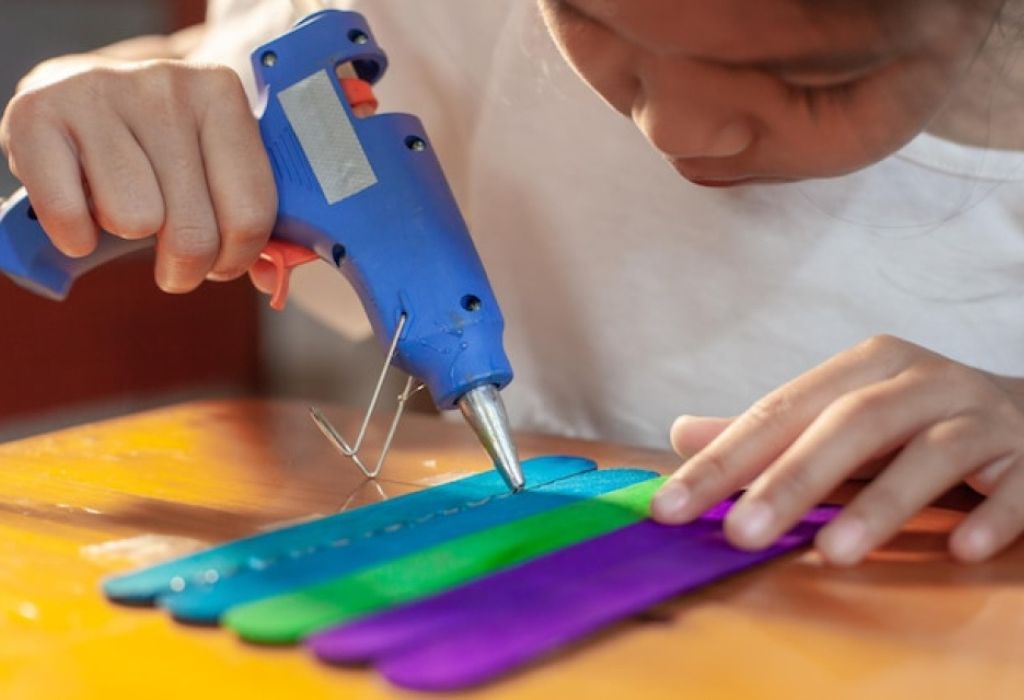
The wattage of the glue gun is the biggest factor. Higher wattage guns heat faster.
The type of heating element also matters. Ceramic heaters warm up quicker than traditional metal coils.
The size of the glue stick impacts heating. Thicker sticks require more time to melt fully.
Room temperature plays a role. A warm environment speeds up the process compared to a cold garage or basement.
The age of the glue gun affects performance. Older guns may take longer as the element weakens.
Corded guns heat more consistently than cordless models. Battery-powered guns may struggle with heating efficiency.
Frequent use can shorten heating time. A recently used gun often reheats quicker than a cold one.
Every model is different, but these factors explain variations.
Does wattage affect heating speed?
Yes, higher wattage heats faster.
Do glue stick sizes matter?
Yes, thicker sticks take longer.
Does room temperature affect it?
Yes, colder rooms slow the process.
Do old glue guns heat slower?
Yes, worn elements take longer.
Tips for Faster Heating
Always plug the glue gun directly into a wall outlet. Extension cords can reduce power flow and slow heating.
Use high-quality glue sticks designed for your gun. Cheap sticks may not melt evenly and can clog.
Preheat the gun before starting your project. Waiting a few extra minutes ensures smoother glue flow.
Keep the glue gun clean. Residue inside the chamber can slow down heating efficiency.
Store the gun in a dry, warm place. Cold storage adds extra time when reheating.
If your gun has dual settings, start on high to speed up the process. Then switch to low if needed for delicate materials.
Allow the gun to fully heat before pulling the trigger. Forcing glue too soon creates uneven melting.
Small adjustments can save time and improve performance.
Can I speed up heating with high settings?
Yes, use high heat first if available.
Does cleaning the gun help?
Yes, it prevents clogs and speeds heating.
Should I preheat before use?
Yes, it ensures smoother glue flow.
Does storage temperature matter?
Yes, warm storage reduces heating delays.
Safety Considerations When Heating a Glue Gun
Hot glue guns reach temperatures up to 400°F. Always handle them with care during heating.
Never leave a glue gun plugged in unattended. Overheating can damage the tool or create fire risks.
Keep the nozzle pointed away from skin and surfaces. Accidental drips can cause burns.
Use a stand or heat-resistant mat while heating. This prevents accidents and protects work surfaces.
Avoid pulling the trigger before the glue is fully melted. Partially melted glue can jam the chamber.
Wear protective gloves if you’re new to using hot glue. They reduce the chance of burns from drips or contact.
Unplug the gun after use. Let it cool fully before storing.
Safety should always come before speed in heating.
How hot does a glue gun get?
Up to 400°F depending on type.
Can I leave it plugged in?
No, never leave it unattended.
Do I need a heat mat?
Yes, it protects surfaces from drips.
Should I unplug after use?
Yes, let it cool before storage.
Common Problems and Solutions
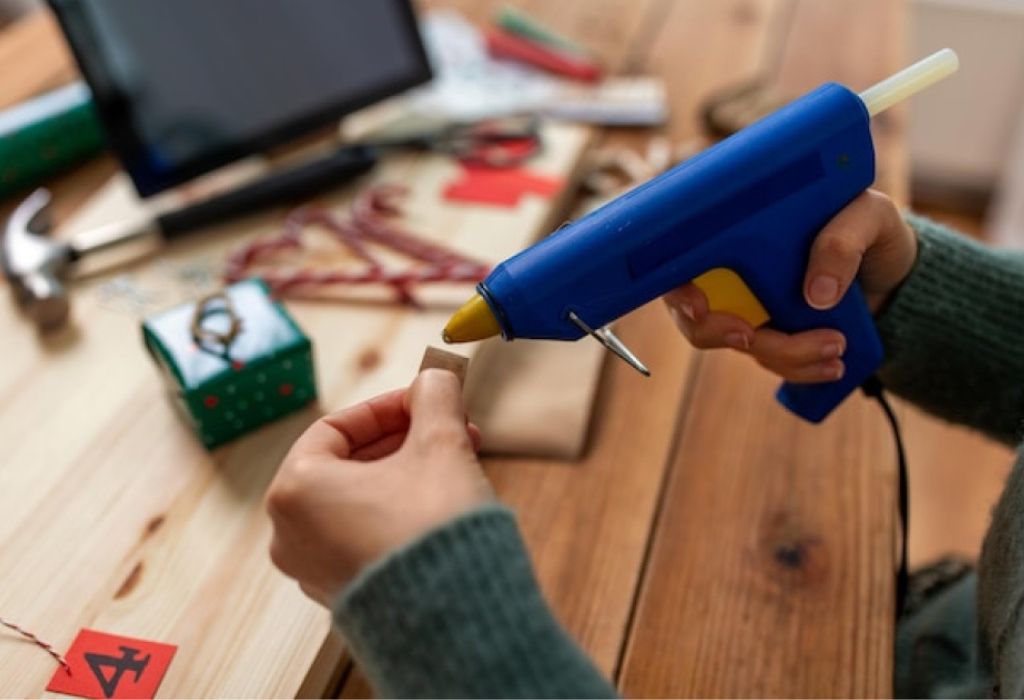
Sometimes a glue gun seems to heat too slowly. This may be caused by low wattage or aging parts.
If the glue flows unevenly, it may not be fully heated. Waiting longer often solves this issue.
Glue jams occur when sticks are forced too early. Always allow full preheating before squeezing the trigger.
If the gun leaks while heating, it may be overheating. Use the correct setting for the glue sticks.
Cordless glue guns often run out of charge quickly. Keep batteries fully charged for consistent heating.
Cheap or incompatible glue sticks can cause issues. Always match sticks to the manufacturer’s recommendation.
Regular cleaning prevents clogs and improves heating times. A well-maintained gun performs faster and more consistently.
Troubleshooting common issues keeps projects running smoothly.
Why is my glue gun heating slowly?
It may be low wattage or aging.
Why is glue flow uneven?
The glue is not fully melted.
Why is my gun leaking?
It may be overheating.
Why does it jam often?
Sticks are forced in too soon.
Conclusion
Hot glue guns are versatile tools for crafts, repairs, and DIY projects. Their heating time depends on size, wattage, and model.
Mini glue guns typically heat in 2 to 4 minutes, while standard guns take 3 to 5 minutes. High-temperature models may need 5 to 7 minutes to be ready.
Factors like glue stick size, room temperature, and heating element design all play a role. Some premium models heat in under 90 seconds.
For anyone asking “how long for hot glue gun to heat up,” the answer is usually a few minutes. With good habits, you can speed the process and keep your projects moving.

I’m Michael R. Turner, the founder, lead writer, and passionate DIY enthusiast behind 101diytools.com. With years of hands-on experience in home improvement and power tools, I built this platform to share practical tips, in-depth guides, and honest reviews to help DIYers of all skill levels tackle projects with confidence and the right tools.

